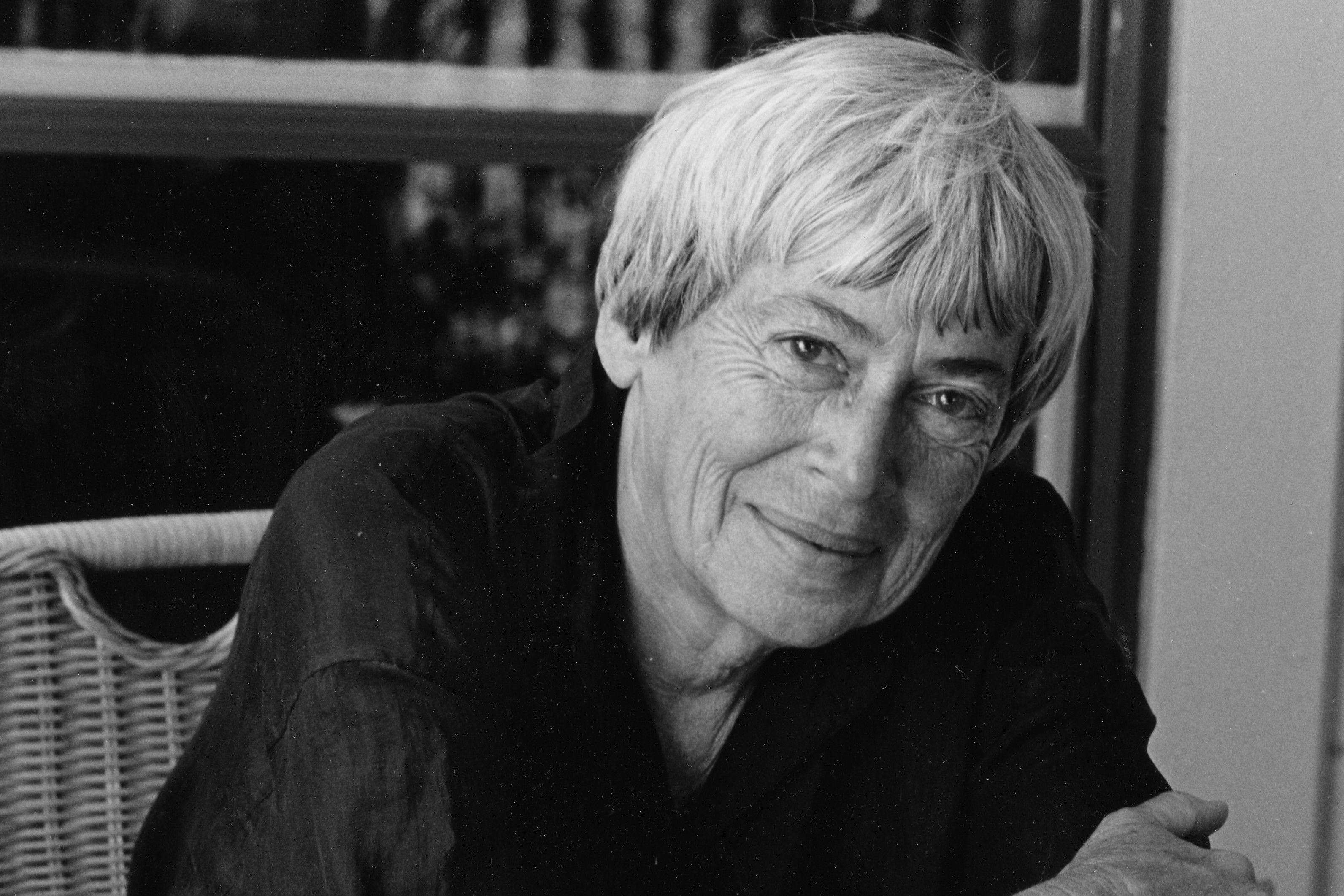Hand2Mouth Theatre and Portland Playhouse Team Up to Tackle a Sci-Fi Classic
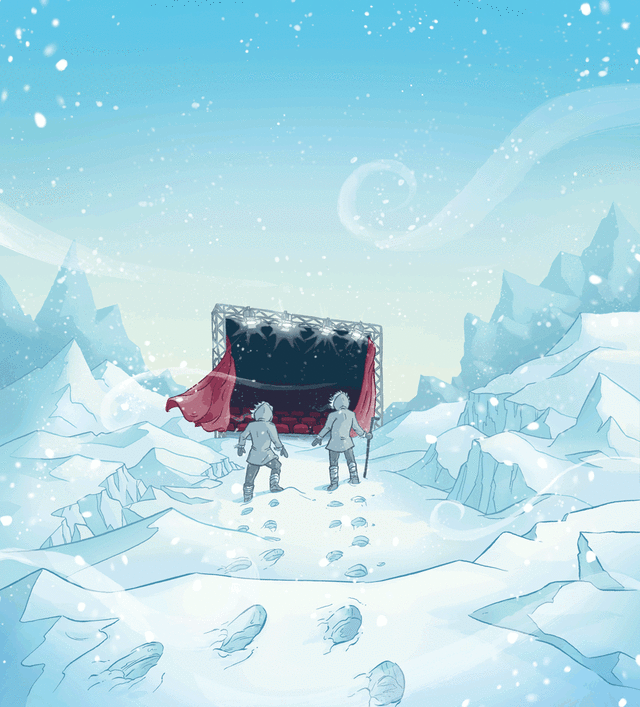
Image: Noah Patrick Pfarr
A trio of space heaters in the white-walled studio under the Hawthorne Bridge struggled to warm the frigid March air, yet the chill suited the task at hand: eight actors conjuring an ice-covered landscape inhabited by genderless aliens. Before they could even begin this first rehearsal, though, the burning question was how to scrub their genders. Makeup, wigs, corsets, body suits?
“The women will need padding on the shoulders, and we should accentuate the hips in the males,” said Noel Plemmons, the resident gender eraser, as he tried to blur the men’s and women’s complexions with makeup. Then he pulled out Ace bandages for the women to bind their chests.
“I’m having flashbacks to learning to tie a tourniquet in CPR class,” said one actress, as she struggled to wrap herself.
“Do you need help?” Plemmons asked with a grin, before proceeding to wind, mess up, and then unwind another, sending her spinning like a pirouetting top.
“Just don’t say ‘genital prosthetics’ anywhere near Ursula Le Guin,” the playwright joked nearby.
“Yeah, that didn’t go over so well,” agreed Jonathan Walters. With a piercing gaze, unruly hair, and a hole in one sock, Walters is the artistic director of Hand2Mouth, an experimental theater ensemble he founded in 2000. After creating 18 productions through a collaborative approach that uses written fragments and group improvisation, the company has earned a reputation for dynamic multimedia feasts—not to mention stages strewn with beer and discarded clothing.
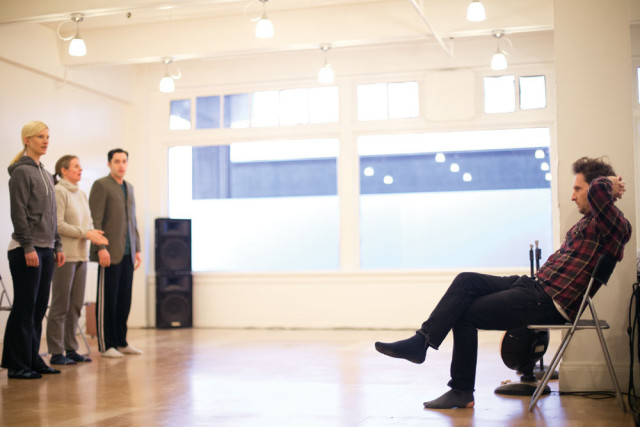
Hand2Mouth artistic director Jonathan Walters (right) leads actors through a scene at their first rehearsal.
Image: Dylan Harkavy
The actors come from both Hand2Mouth and the Portland Playhouse, a five-year-old company operating out of a former church in Northeast Portland that has quickly built a name with sharp, strongly acted productions of provocative works.
Both companies are formidable in their own right, but it will take their combined might to conquer their intimidating, otherworldly goal: the Gobrin Ice Glacier between the nations of Orgoreyn and Karhide on the planet Gethen. That is, to take on the fantastical world of Portland author Ursula K. Le Guin’s classic 1969 science fiction novel, The Left Hand of Darkness—not to mention the discriminating tastes of the grande dame herself—in its first theatrical adaptation in 17 years, opening at Portland Playhouse on May 2.
The Left Hand of Darkness
May 2–June 2
Portland Playhouse
602 NE Prescott St
Walters discovered the novel while researching another project. He was taken with Le Guin’s ability to tackle serious questions of racism, gender relations, and cultural taboos in what he calls a “totally un-clichéd” setting. Praised by Harold Bloom for elevating fantasy into high fiction, the novel portrays an icy world populated by human-like aliens who are neither male nor female, but capable of assuming either role. When a black human visitor becomes embroiled in diplomatic intrigue between the planet’s two nations, the story builds to a jailbreak and treacherous cross-country trek.
“I thought, wow, this would be amazing to stage, because it’s impossible,” Walters says. “There will be no gender onstage, and we will have a scene where we cross 800 miles of ice together.”
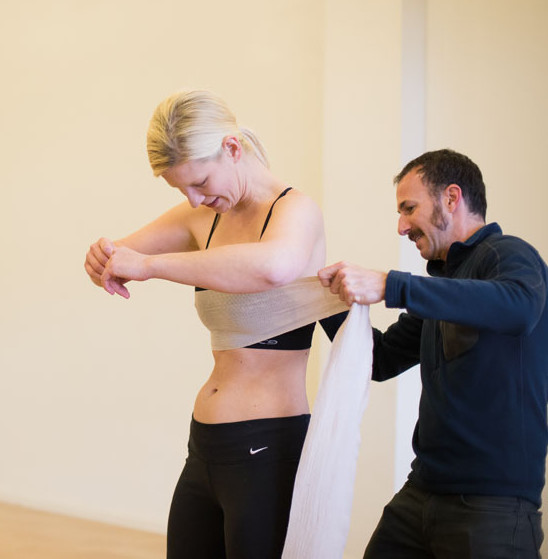
Stylist Noel Plemmons binds lead actor Allison Tigard's chest.
Image: Dylan Harkavy
But Hand2Mouth didn’t have the players to fill out the diverse cast of characters (“We are five-foot-five to five-foot-nine, 29 to 35, and Anglo-Saxon,” Walters says), nor the experience with narrative storytelling. Indeed, Walters hasn’t directed a professional production from a script in over a decade. So Hand2Mouth turned to Portland Playhouse, and a collaboration was born. “I liked the idea of working with them right away,” says the Playhouse’s artistic director, Brian Weaver, a skinny Virginian whose calm, wide-eyed demeanor seems more like that of a devoted Phish fan than the creative force behind Portland’s hottest theater company. “What I was drawn to was the design world that they bring,” he says, “the soundscape, the landscape, the way their artists break down expectations between a role they’re playing and themselves”—the exact things needed to adapt a sci-fi novel. The two agreed to a coproduction, with Walters directing.
The partnership is unusual—and challenging—in that both ensembles seek to contribute equally under the standard production time of weeks, instead of Hand2Mouth’s usual months or years of development. But before they could even do that, they had to transform the novel into a workable script that Le Guin, known for tight control of her work, would approve. Walters turned to John Schmor, head of the theater department at University of Oregon, who has adapted a number of novels for the stage. Schmor and Walters worked through 18 drafts.
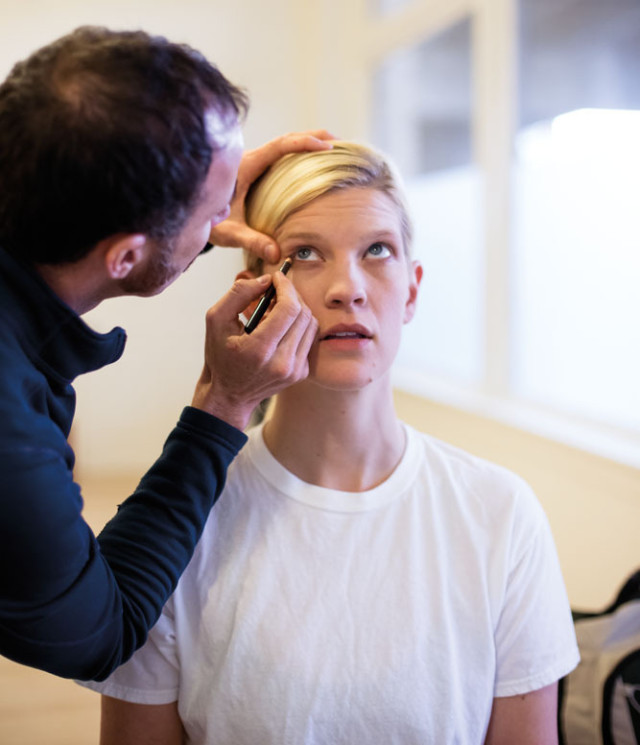
Stylist Noel Plemmons applies makeup to conceal the gender of lead actor Allison Tigard.
Image: Dylan Harkavy
Le Guin says she’s happy to see Left Hand of Darkness adapted. “It’s artistically far more rewarding than signing over your work to commercial filmmakers,” she says—although she did exercise final approval over the script (a fact she promptly reminded Walters of when he was a day late sending it over). She’s mostly remained quiet about her vision for the work except when it came to the casting of the genderless lead character. “Ursula was mum on the whole thing,” says Walters. “But when I told her we cast a woman, she came the closest I saw her to dancing in her chair, and said, ‘I wanted Vanessa Redgrave.’” Allison Tigard, a tall blonde with sharp cheekbones and an intense gaze, bears more than a little resemblance.
Creating the novel’s icy landscapes will be daunting as well. The production’s set and lighting designers haven’t settled on how, exactly, they will bring Gethen’s glaciers to life—one idea involves 500 pounds of rock salt. And then, of course, there’s the question of how to erase gender.
Back in the studio, Walters gathered the actors into a circle. “I hadn’t wanted to spend a great deal of time fixating on genderlessness today, because we’re going to fixate on it every day,” Walters said. Instead, he wanted to workshop several tricky scenes so that Schmor would have one last chance to rewrite them before leaving for Europe.
With Walters directing in part through questions and creative delegation, the collaborative group went well into the night. Walters has successfully worked with stilts and fire, non-English-speaking partners, and emotionally fraught subject matter—family dysfunction, dementia, karaoke—but his biggest challenge yet may be a four-week rehearsal period.


